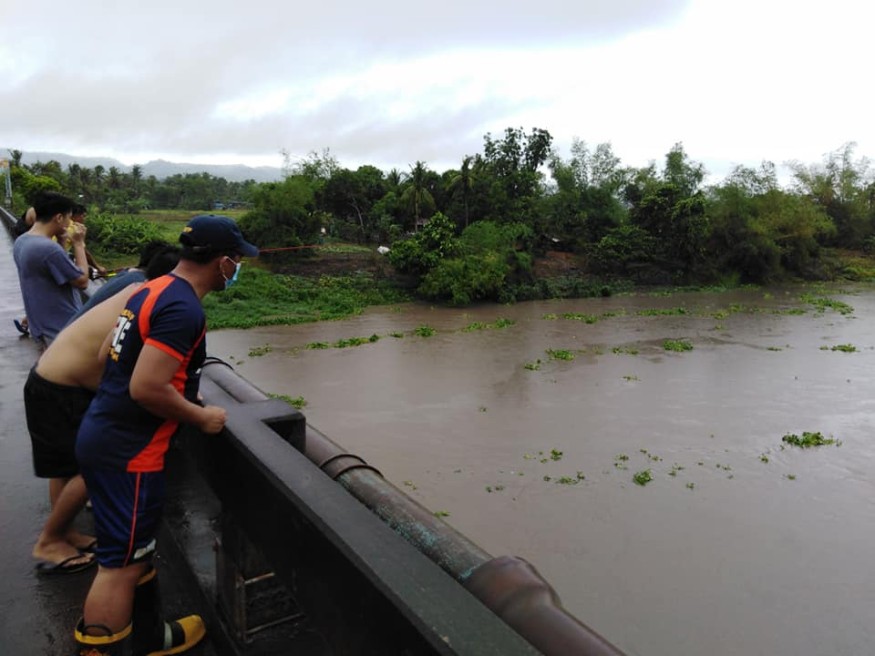

An estimated 140,000 were crammed into evacuation centers on Friday as powerful typhoon Ambo (International name: Vongfong) ravaged the Philippines.
Typhoon Vongfong, made landfall in Eastern Samar last Thursday with winds of 155km (96 miles) an hour and gusts of up to 255kph (158 miles an hour), according to PAGASA, the country's weather agency.
The typhoon was classified as a category 3 hurricane. It brought with it torrential rains, strong winds that ripped off roofs of flimsy homes near the shore. The storm hit as millions of Filipinos are mandated to stay at home to curb the spread of coronavirus. The powerful storm, however, caused at least 141,700 to flee from their home because of the powerful storm and take refuge at the evacuation center.
Damage in Eastern Samar
Gov. Ben Evardone of Eastern Samar likened the typhoon to 'Yolanda Jr..' Supertyphoon Yolanda, the strongest typhoon to hit the land left more than 7,000 people dead and left Php 130 billion in damages in November 2013.
According to Evardone, the devastation in his province is so "enormous and unimaginable" that he likened Ambo to Typhoon Yolanda Jr. in terms of damage to infrastructure. The typhoon is also a double whammy for them as the province is also faced with the COVID-19 crisis.
The Philippine Daily Inquirer reported these damages as of May 16, 5:20 AM:
Public structures were also damaged by the typhoon, including evacuation centers and classrooms, which were turned into COVID-19 isolation centers. High winds damaged the roof of a church in Arteche Town, Eastern Samar.
Newly harvested rice, coconut, corn, and root crops were also damaged. No estimate on the cost of damage was given.
Houses and gymnasiums in municipalities of Maslog and Oaras, Easter Samar, were also damaged. Several areas were impassable to floods.
On Friday, power was restored in several parts of Eastern Samar.
Evacuation in Bicol Region
Thousand were also evacuated in Bicol Region as residents living near the slopes of Mayon Volcano were asked to leave the area before the typhoon to avoid landslides and flooding.
Albay Governor Al Francis Bichara ordered the decampment of approximately 16,000 displaced families that are staying in evacuation centers, churches, and houses of relatives.
Houses in Oas, Sorsogon, were submerged in waters.
Mayor Das Maronilla of Libon reported that ten villages were flooded.
In Guinobatan town, a landslide of heavy rocks and sand cascaded down to the foot of Mayon Volcano.
In Bulan, Sorsogon, several hectares of rice, corn, and vegetables were damaged.
Evacuation in Times of Coronavirus
Local government officials are grappling for ways to ensure the safety and comfort of people in evacuation areas, and at the same time, implement social distancing measures to prevent the coronavirus spread.
The provincial and city governments, now strapped for resources due to the coronavirus outbreak, were faced with a daunting logistical and space issue: at least 200,000 people had to be moved from their homes in coastal and mountainous areas to prevent damage in cases of landslides and flooding.
With limited space for evacuation centers, implementing social distancing is a challenge.
Aljazeera accounts for these challenges in evacuation areas:
In Buhi, Camarines Sur, evacuees were given face masks before they were allowed in evacuation centers. According to Mark Anthony Nazara, the public officer at Buhi, more temporary shelters were opened to ensure social distancing among evacuees.
In Northern Samar, the number of the school building for storm shelters was doubled to ensure that approximately 80,000 residents who were forced to evacuate from high-risk coastal communities are accommodated and are practicing social distancing. PAGASA, the government weather agency warned of "storm surges that may cause potentially life-threatening coastal inundation."
© 2025 NatureWorldNews.com All rights reserved. Do not reproduce without permission.





